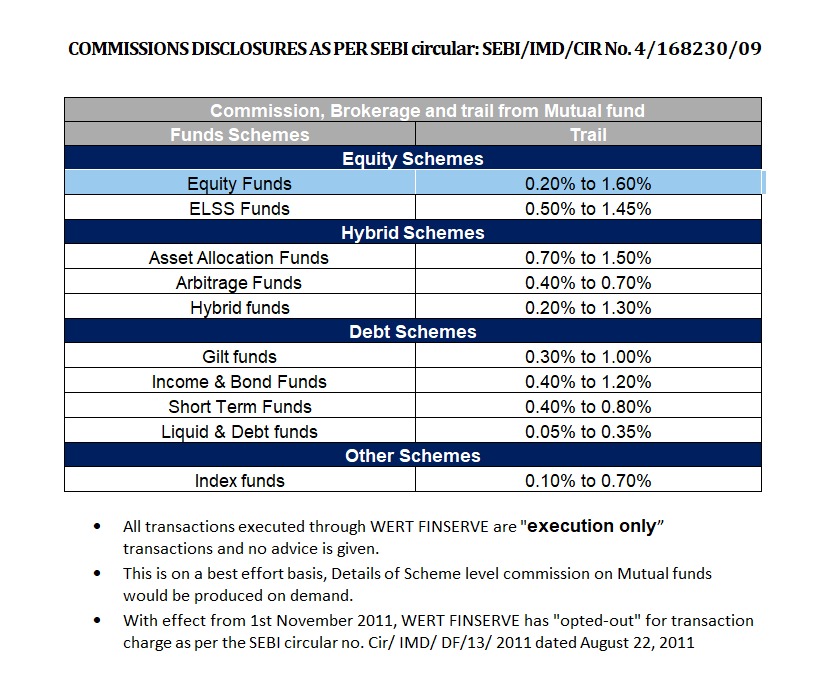On April 2, 2025, U.S. President Donald Trump stunned global markets by declaring a national economic emergency and enforcing a 10% baseline reciprocal tariff on all U.S. imports. Country-specific rates soared as high as 54%, with India assigned a 26% tariff. In a matter of hours, market screens turned red across continents.
This wasn’t an isolated outburst. It was the next chapter in a strategy Trump started writing in 2018—weaponizing tariffs to “correct” trade imbalances and realign America’s economic power.
India, while not the target, was caught in the crossfire. And that positioning—between China’s dominance and America’s defensiveness—makes India’s case particularly unique.
The World Got Tarified
Between 2018 and 2021, trade as we knew it took a sharp turn. U.S. President Donald Trump introduced a bold, polarizing idea: reciprocal tariffs—a call for fairness that quickly spiraled into a global economic confrontation.
Claiming that America was getting shortchanged in its trade relationships, Trump imposed aggressive tariff rates on over 180 countries. China was at the heart of the campaign, but India wasn’t spared either. What followed was a trade realignment with ripple effects across every major economy.
Tariffs have reshaped global value chains, shifted manufacturing bases, and forced countries like India to reassess their export strategies.
What Are Tariffs, And Why Do They Matter
Tariffs are government-imposed taxes on imports. Historically, they have served as protective barriers for domestic industries, a source of revenue, or leverage in trade negotiations. The post-WWII consensus leaned toward liberalization and tariff reduction, particularly through frameworks like GATT and the WTO.
But under President Trump, the narrative shifted. Tariffs became a tool to assert national interest, reduce trade deficits, and counteract what the administration saw as asymmetrical trade relationships—particularly with China and India.
Trump pivoted sharply, using tariffs as a central diplomatic and economic lever. The logic? “If you tax us, we tax you back.”
Tariff Timeline – U.S. Trade Policy From 1992 To 2025
1992–2000: WTO and Bilateral Engagements
- China granted Most Favored Nation status.
- India begins liberalizing its economy, increasing bilateral trade with the U.S.
- WTO rules become the default mechanism for dispute resolution.
2001–2016: Quiet Tensions
- China joins WTO in 2001, floods global markets with low-cost goods.
- U.S. uses antidumping and countervailing duties on select Chinese/Indian products.
- India benefits from GSP (Generalized System of Preferences) status.
2018–2020: Trump’s First Wave
Trump imposes wide-reaching tariffs:
- Section 301: 25% on $370B of Chinese imports.
- Section 232: 25% on steel and 10% on aluminum from India and others.
- Section 201: Safeguard tariffs on solar panels and washing machines.
- India’s GSP revoked in 2019, impacting $5.6B in exports.
India responds with tariffs on U.S. almonds, apples, walnuts, and industrial inputs. While the 2020–2025 window lacked dramatic headlines, it wasn’t stagnant. It was a period of recalibration—where countries prepared for the next round of disruption.
2025: The New Emergency
- 10% blanket tariff on all imports.
- India: 26% effective reciprocal tariff.
- Triggered severe volatility in global financial markets.
Who Faced What: Trump’s Reciprocal Tariff Regime
The Trump administration claimed the U.S. was losing out by charging lower tariffs compared to other nations.
Trump’s thesis: “If other countries tax our exports at 50%, we’ll tax theirs the same.” So, here’s a breakdown of U.S. Reciprocal Tariffs:
| Country | Tariffs on U.S. Goods (%) | U.S. Reciprocal Tariffs (%) |
| Vietnam | 90 | 46 |
| China | 67 | 34 |
| India | 52 | 26 |
| Japan | 46 | 24 |
| South Korea | 50 | 25 |
| Taiwan | 64 | 32 |
| European Union | 39 | 20 |
| United Kingdom | 10 | 10 |
India, though not the primary target, found itself entangled. It lost its GSP benefits (covering $5.6B in duty-free exports), and its steel/aluminum exports to the U.S. became costlier. India retaliated with tariffs on 28 U.S. goods—including almonds, walnuts, and apples.
China’s Strategy – Retaliate, Adapt, Restructure
China didn’t just react—it strategized. Here’s how it maneuvered around Trump’s tariffs:
- Matched U.S. Tariffs: Imposed retaliatory duties on $110B of U.S. exports—soybeans, pork, autos.
- Weakened the Yuan: Currency depreciation offset tariff costs, making Chinese exports cheaper.
- Shifted Supply Chains: Rerouted exports via Vietnam, ramped up production in Mexico and Southeast Asia.
- Policy Backing: Increased export rebates, provided liquidity to exporters, accelerated “Made in China 2025.”
- Opened to Others: Lowered tariffs for other countries (from 8% to 6.5%)—making non-U.S. imports cheaper.
Result: while exports to the U.S. dipped, China gained resilience, built alternate markets, and hedged future risks.
India’s Sectoral Story – Who Won, Who Struggled
India exports around 20% of its total outbound goods to the U.S., making it the largest single export destination.
U.S. Share in India’s Exports:
| Country | % of Total Exports |
| Mexico | 81% |
| Vietnam | 34% |
| India | 20% |
| China | 13% |
| Germany | 10% |
India’s Top Export Sectors to the U.S.
| Sector | Share of India’s Exports to U.S. (%) |
| Electronic Goods | 14 |
| Gems & Jewellery | 13 |
| Textiles | 12 |
| Pharmaceuticals | 11 |
| Machinery | 9 |
| Petroleum Products | 8 |
| Agri Products | 7 |
| Metals | 6 |
| Chemicals | 4 |
Sectoral Breakdown
Electronics (14%)
- U.S. tariffs on Chinese electronics opened supply gaps—India started plugging them.
- Apple increased iPhone manufacturing in India; Chinese brands like Haier and Hisense looked to shift assembly lines.
- But the sector also faced risk: China could dump surplus into India, pushing local prices down.
Textiles & Apparel (12%)
- With the U.S. imposing 25% tariffs on Chinese textiles, American buyers turned to India.
- Indian mills saw higher demand, especially in cotton products.
- Yet, Vietnam and Bangladesh, with better logistics and FTAs, absorbed more of the shift.
Pharma (11%)
- Exempt from tariffs, but strategic winds blew India’s way.
- Global firms diversified away from Chinese API producers, increasing Indian CDMO contracts.
- India expanded API parks and PLI schemes to support local manufacturing.
Auto Components & Machinery (9%)
- U.S. buyers shifted sourcing from China to India for parts.
- Indian firms like Motherson and Bharat Forge gained modestly.
- Domestic concern: influx of cheaper Chinese parts into Asia could undercut Indian producers.
Gems & Jewellery (13%)
- U.S. remains the top destination for Indian jewelry exports.
- Any dip in U.S. retail or tariff-related costs directly hits this high-value sector.
Agriculture & Processed Food (7%)
- When China halted U.S. agri purchases, it turned to other sources—India saw some gain in cotton and seafood.
- India’s retaliation on U.S. almonds and apples protected local growers (e.g. Himachal’s apple producers).
Metals & Chemicals
- Indian steel hit by 25% U.S. duty; aluminum by 10%.
- China’s diverted metal glut spilled into global markets, pushing down prices.
- Chemicals saw mixed effects—some gained as U.S. buyers looked beyond China; others struggled with cost volatility.
Market Reaction – April 2025
Global Markets
- S&P 500: ↓ 10.5%
- Nasdaq: ↓ 11.4%
- Nikkei 225: ↓ 12.8%
- Hang Seng: ↓ 13.2%
- DAX (Germany): ↓ 13.7%
Indian Equities (April 7, 2025)
- Sensex: Opened at 71,449.94; ↓ 5% intraday; closed ↓ 2.77%
- Nifty 50: Opened at 21,758.4; ↓ 5% intraday; closed ↓ 2.94%
- Nifty VIX: ↑ 60%, reflecting fear across segments
Sectoral Impact
All 13 major sectors declined. Worst hit:
- IT: U.S. exposure + forex risks
- Metals: Margin pressure, dumping risk
- Financials: Market volatility and credit concerns
Commodities
- Gold: $3,026/oz (↓ 1.06%) after brief flight to safety
- Silver: $30.21/oz (↓ 10.24%), 8-week low, hit by demand outlook
Long-Term Strategic Takeaways For India
Trump’s tariff regime didn’t just impose costs—it offered a reality check and opportunity.
What India Gained:
- Export Opportunities in electronics, apparel, pharma, auto components.
- Increased Global Attention as a China-plus-one manufacturing alternative.
- Policy Momentum: PLI schemes, customs revamps, API promotion—all gained urgency post-2018.
What India Risked:
- Losing GSP benefits led to higher landed costs in the U.S. for Indian goods.
- Vulnerability to Trade Rerouting—as Chinese goods sought alternate markets, India faced pricing pressure.
- Geopolitical Complexity—balancing between U.S. and China trade needs.
Conclusion
Trump’s tariffs reshaped global trade. China used the pressure to build internal resilience. The U.S. shifted from WTO-era liberalism to a power-centric trade approach. And India? India got both a push and a pause.
For India, the post-Trump trade landscape is a chance to scale up, specialize, and substitute. Global firms want alternatives. The U.S. wants partners, not dependencies. And India wants growth that’s export-led and defensible.
Tariffs won’t disappear. But if India uses them as a signal to upgrade—not retreat—it might just convert this global tension into its next leap forward.
DISCLAIMER
The views expressed in this article are personal and not meant to predict or time markets. The content is for informational purposes only and does not constitute investment, legal, or tax advice. Please consult your financial advisor before making any investment decisions. WERT Finserve shall not be held liable for consequences arising from reliance on this content. Mutual Fund investments are subject to market risks. Read all scheme-related documents carefully.





